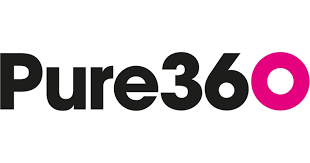Email marketing has long been a powerful tool for businesses to connect with their audience and drive results. Two popular players in the email marketing world are Emma and Pure360. Both platforms offer a range of features and capabilities to help you craft effective email campaigns. In this in-depth comparison, we will explore the strengths and weaknesses of each tool to help you determine which one is the best fit for your email marketing needs.
| Emma Email Marketing Tool | Pure360 |
|---|---|
 |  |
| G2 Score – 4.0 out of 5 stars | G2 Score – N/A |
| TrustRadius Score – 8.6/10 | TrustRadius Score – 7/10 |
Ease of Use: Emma vs. Pure360
When it comes to email marketing, the user-friendliness of a platform can make a significant difference. You want a tool that is intuitive and doesn’t require hours of training to get started.
Emma:
Emma prides itself on its user-friendly interface. Whether you’re a seasoned email marketer or a beginner, you’ll find Emma easy to navigate. The dashboard is clean and well-organized, making it simple to find the features you need.
One of Emma’s standout features is its drag-and-drop email builder. You can create visually appealing emails without any coding skills. The email editor offers a wide range of customizable templates, making it effortless to match your brand’s style.
Pure360:
Pure360 also emphasizes simplicity in its platform design. Users can quickly adapt to the interface and begin creating campaigns. The dashboard provides easy access to various tools and features.
Pure360 offers a similar drag-and-drop email builder, which is ideal for those who prefer a straightforward approach to email design. The platform’s email templates are versatile, allowing you to craft engaging emails without much hassle.
Email Campaign Automation: Emma vs. Pure360
Emma:
Emma offers a robust and user-friendly email campaign automation system. The platform empowers you to create automated workflows that respond to subscriber actions and behaviors. These workflows can be triggered by events such as sign-ups, clicks, or purchases, allowing you to send timely and relevant emails based on user interactions.
One of Emma’s standout features is its intuitive drag-and-drop email builder, which extends to the automation process. This means you can create automated emails with ease, even if you lack coding skills. The email editor provides a wide range of customizable templates, simplifying the process of crafting visually appealing and engaging emails.
Emma’s email automation capabilities also include audience segmentation, which is essential for delivering targeted content. You can segment your email list based on user behavior, demographics, or engagement levels. This empowers you to send highly personalized emails to different segments of your audience, increasing the relevance of your campaigns.
Additionally, Emma offers A/B testing within its automation features. This allows you to experiment with different elements of your automated emails to optimize performance. Whether it’s testing subject lines, content variations, or send times, A/B testing ensures you’re continually improving your email campaigns.
Pure360:
Pure360 provides robust email campaign automation tools designed to streamline your marketing efforts. Similar to Emma, the platform enables you to create automated workflows triggered by subscriber actions and behaviors.
Pure360’s automation system allows for behavior-based triggers, such as sending follow-up emails when a subscriber clicks on a specific link in a previous email. This level of automation ensures that your emails are highly relevant and timely, increasing engagement.
Like Emma, Pure360 also emphasizes the importance of audience segmentation. You can create dynamic segments that update automatically based on subscriber behavior. This means you can continuously refine your email lists, ensuring that the right content reaches the right people at the right time.
While both platforms offer robust automation capabilities, Pure360’s focus on behavior-based triggers and dynamic segmentation may appeal to marketers seeking advanced automation options. This can be especially beneficial for businesses that want to create highly personalized email journeys for their subscribers.
Reporting and Analytics: Emma vs. Pure360
Emma:
Emma provides a robust set of reporting and analytics tools designed to help you gain valuable insights into the performance of your email marketing campaigns. The platform’s reporting capabilities are comprehensive and user-friendly.
You can easily track and analyze key metrics such as open rates, click-through rates, conversion rates, and more. Emma’s reporting dashboard presents these metrics in an intuitive and visually appealing manner, allowing you to quickly assess the effectiveness of your campaigns.
One standout feature of Emma’s reporting is the ability to visualize data using customizable charts and graphs. These visual representations make it simple to grasp your campaign results at a glance. Additionally, Emma offers click maps, a feature that displays where subscribers are clicking within your emails. This insight is invaluable for refining your email content and layout to optimize engagement.
To further enhance your email marketing efforts, Emma provides A/B testing capabilities. You can easily test different elements of your emails, such as subject lines, content, or send times, to determine what resonates best with your audience. This data-driven approach empowers you to make informed decisions and continually improve your email campaigns.
Pure360:
Pure360 also offers a comprehensive suite of reporting and analytics tools to help you measure the impact of your email marketing efforts. The platform’s reporting features are designed to be accessible and informative.
You can access detailed insights into essential metrics like open rates, click-through rates, and conversion data. Pure360’s reporting dashboard provides a clear overview of your campaign performance, allowing you to monitor the effectiveness of your email marketing strategy.
One unique feature of Pure360 is its customer journey tracking. This allows you to visualize how subscribers interact with your emails and website. By gaining a holistic view of their engagement, you can better understand their behaviors and preferences, enabling you to tailor future campaigns accordingly.
Pure360 goes a step further by offering revenue tracking, which allows you to attribute sales directly to your email campaigns. This feature is particularly valuable for e-commerce businesses, as it helps measure the direct impact of email marketing on your bottom line.

Related: Check out our free SEO suite

Email Template Customization: Emma vs. Pure360
Emma:
Emma offers a wide array of customizable email templates, making it a versatile platform for creating visually appealing and brand-consistent emails. The platform’s user-friendly interface allows you to personalize templates with ease. You can effortlessly add your own images, choose your preferred color schemes, and select fonts that align with your brand identity.
One of Emma’s standout features is its drag-and-drop email builder. This intuitive tool lets you design emails without any coding skills. You can quickly arrange elements within your templates, adjust layouts, and fine-tune the design to match your brand’s style seamlessly.
For those looking for inspiration or seeking to save time, Emma’s template library is a valuable resource. It provides a diverse selection of professionally designed templates that cater to various industries and purposes. Whether you need a newsletter, promotional email, or event invitation, Emma’s template library has you covered.
Moreover, Emma’s commitment to mobile responsiveness ensures that your emails look appealing and function correctly on all devices. This is crucial in today’s mobile-centric world, as a significant portion of email opens occurs on smartphones and tablets.
Pure360:
Pure360 also prioritizes email template customization to enable you to craft visually engaging and brand-aligned emails. Its template editor is user-friendly, making it accessible for users with various design backgrounds.
The platform empowers you to personalize templates by adding images, text, buttons, and other elements that suit your email marketing needs. Pure360’s template library, although not as extensive as Emma’s, offers a variety of design options. You can choose from a selection of templates that cater to different styles and content types.
Like Emma, Pure360 emphasizes the importance of mobile-responsive designs. Your email campaigns will look polished and perform optimally, regardless of whether recipients open them on desktop computers, smartphones, or tablets.
Pricing
Emma
- Pricing is typically tiered based on features and list size:
- Pro Plan: Offers automation, segmentation, and analytics. Pricing usually starts at around $89/month.
- Plus Plan: Includes additional features like landing pages and A/B testing. Pricing is higher and usually requires a quote from Emma.
- Enterprise Plan: Custom pricing for advanced needs like custom integrations and dedicated support.
Pure360
- Pure360 offers personalized pricing based on the size and needs of the business.
- Email Marketing Module: Includes customizable templates, reporting, and analytics.
- Personalization Module: Offers advanced personalization and segmentation tools.
- Marketing Automation Module: Provides automation features for more sophisticated campaigns.
- Pricing details are not publicly listed, so interested users need to contact Pure360 for a custom quote.
Deliverability and Compliance: Emma vs. Pure360
Emma:
Emma prioritizes email deliverability and compliance by employing several key strategies. One of its primary focuses is on maintaining a strong sender reputation. This reputation is crucial for ensuring that your emails consistently land in your subscribers’ inboxes rather than getting filtered into spam folders.
To accomplish this, Emma provides proactive guidance on sender best practices. It helps you steer clear of practices that might negatively impact your sender reputation, such as sending emails to outdated or unengaged email lists. By adhering to these guidelines, you can enhance your email deliverability rates.
Emma also places great importance on email authentication. It supports email authentication protocols like DKIM (DomainKeys Identified Mail) and SPF (Sender Policy Framework). Implementing these protocols adds an extra layer of trust to your emails, making it less likely for them to be flagged as spam by recipient email servers.
Effective list hygiene is another key aspect of deliverability that Emma encourages. The platform equips you with tools to manage and segment your email list effectively. Regularly cleaning your list to remove inactive or unresponsive subscribers not only boosts deliverability but also ensures that your emails are reaching a genuinely interested audience.
In terms of compliance, Emma assists you in meeting the requirements of email marketing regulations such as CAN-SPAM and GDPR. It simplifies compliance by enabling you to easily include an unsubscribe link in your emails, giving subscribers the option to opt out. Furthermore, Emma facilitates managing subscriber preferences, ensuring that you only send emails to individuals who have explicitly expressed their interest in receiving them.
Pure360:
Pure360 shares Emma’s commitment to email deliverability and compliance, employing a range of strategies to ensure your emails reach their intended recipients.
Like Emma, Pure360 places a strong emphasis on sender reputation management. It encourages best practices to maintain a positive sender reputation, ensuring that your emails consistently find their way to the inbox. By adhering to these recommendations, you can optimize your email deliverability rates.
Authentication is another vital aspect of Pure360’s approach to deliverability. It supports email authentication protocols such as DKIM and SPF, bolstering the credibility of your email communications. This authentication process reduces the likelihood of your emails being classified as spam by recipient email servers.
Pure360 also recognizes the importance of list hygiene. It provides tools and features to help you effectively manage and segment your email list. Regularly purging your list of unengaged or inactive subscribers not only enhances deliverability but also guarantees that your messages reach an audience genuinely interested in your content.
In terms of compliance, Pure360 offers comprehensive support for adhering to email marketing regulations, including CAN-SPAM and GDPR. It simplifies compliance by facilitating the inclusion of an unsubscribe link in your emails, allowing recipients to easily opt out if they choose. Furthermore, Pure360 aids in managing subscriber preferences, ensuring that your email campaigns only reach individuals who have explicitly indicated their desire to receive them.
Conclusion
In conclusion, the comparison between Emma and Pure360 reveals two robust email marketing tools, each with its own strengths and capabilities.
Emma shines with its user-friendly interface, making it accessible to marketers of all skill levels. Its drag-and-drop email builder and extensive template library simplify the process of creating visually appealing and brand-consistent emails. Emma’s reporting and analytics features are top-notch, offering data visualization and A/B testing to help you continually optimize your email campaigns. Additionally, Emma’s commitment to email deliverability and compliance ensures that your messages reach your subscribers’ inboxes while adhering to email marketing regulations.
Pure360, on the other hand, stands out with its advanced email campaign automation capabilities, including behavior-based triggers and dynamic segmentation. These features allow for highly personalized and targeted email journeys, making it an excellent choice for businesses seeking advanced automation options. Pure360 also offers unique insights through customer journey tracking and revenue attribution, providing valuable data for optimizing your email marketing strategy.
Ultimately, your choice between Emma and Pure360 should align with your specific needs and preferences. If you prioritize user-friendliness, comprehensive reporting, and customization options, Emma may be the better fit. However, if advanced automation, behavior-triggered campaigns, and in-depth insights are your priorities, Pure360 could be the ideal choice.
Read Next:





















